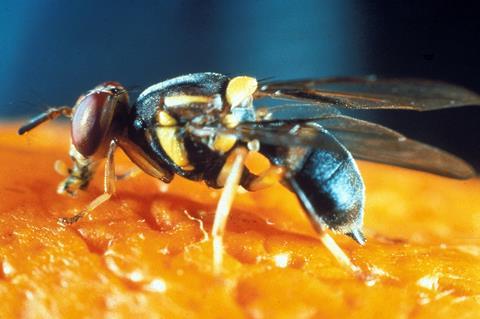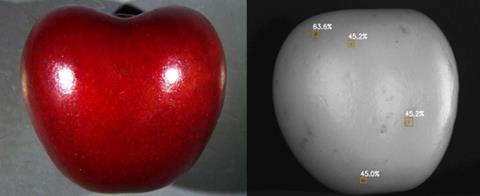Lead researcher Maryam Yazdani says new AI-powered technology could lead to further access to export countries
Australian researchers have tested a new way to detect fruit flies in cherries and other fruits using AI programed optical scanning.

The CSIRO (Commonwealth Scientific and Industrial Research Organisation) project, led by entomologist Maryam Yazdani aims to make detection more efficient and effective.
“Many horticultural packhouses use optical scanning as a key component of the quality grading process,” Yazdani told Fruitnet. “What we tried to do [with our research] was to develop an imaging system specifically for pest detection that can be integrated into the [existing] optical grading in the packhouses.”
Yazdani said she hopes it could open up market access to countries currently closed off to Australian exporters due to potential fruit fly risk.
Australia currently uses end-point treatments such as fumigation and manual inspections to manage fruit fly infestation risks for fruit exported internationally as well as for inter-state domestic transport.
“Australia [already] has a very strong security in place,” Yazdani said. “But this emerging technology may offer additional tools to border security regulators to minimise the risk of pest transportation.”
In fact, Yazdani sees potential for optical scanning as an alternative to fumigation.
“Fumigation is quite expensive, and it has already been banned in many countries,” she said. “We may not be able to have access to some countries in the next few years, so we really need to have an alternative to fumigation.”
The optical scanning technology takes high resolution images of fruit as part of the grading process. From the images, the AI program can detect infestation including recently laid eggs within the fruit which can then be removed via existing sorting technologies within the packhouse.
The program works by referencing previous images of infestation and matching signs of defects in the new fruit. According to Yazdani, the team generated more than 40,000 images during the three-year development process to “train” the AI program.

“When we have good quality data then the AI model that we are developing is more accurate,” Yazdani said. “So far, the detection model that we have developed for fruit fly damage in cherries achieved about 95 per cent accuracy.”
Throughout the development process the CSIRO team focused on identifying Queensland fruit fly in Australian cherries. However, some tests used blueberries, apples and nectarines as well as other fruit fly species including the Mediterranean fruit fly.
“We tested this technology on different fruit flies but the main focus for us was on the Queensland fruit fly, which is a major issue for market access,” Yazdani said. “If everything goes well, we are aiming to expand it to other fruit types are also fruit fly species.”
The CSIRO is working with a commercial partner to test integration opportunities and hopes to license its model to existing packhouse grading systems.



